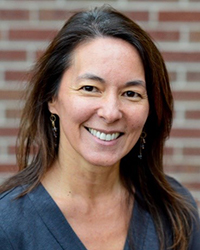Advocacy
Enhancing the health and well-being of the children and families in our community.
Advocating for children is a top priority for Children’s Hospital Colorado and the Department of Pediatrics at the University of Colorado School of Medicine.
To this end, our faculty and trainees actively collaborate with the Department of Public Affairs at Children’s and colleagues at CU SOM, the Colorado School of Public Health, and the Colorado Chapter of the American Academy of Pediatrics to effect comprehensive and strategic advocacy and legislative efforts on the local, state, and national levels.
A legislative advocacy elective has been designed for pediatric residents to provide an overview of Children’s Colorado’s legislative advocacy efforts on behalf of children. Elective participants gain an understanding of the legislative process and the variety and scope of legislative issues introduced each year that have the potential to impact the health and well-being of Colorado’s children; and they are able to learn how physicians and advocates can influence public policy decisions related to children’s health and the provision of pediatric health care.
Our faculty have been instrumental in developing an interdisciplinary elective on leadership and advocacy. Initially designed for medical students, the Leadership Education Advocacy Development and Scholarship (LEADS) curriculum has been adapted for resident use as well. The premise is to teach young physicians the skill set that will empower them as physician advocates.
History
In July 1962, C. Henry Kempe, MD, and University of Colorado School of Medicine colleagues broke the silence on child abuse and neglect with their publication of “THE BATTERED CHILD SYNDROME“ in the Journal of the American Medical Association (181:17-24). Not surprisingly, the landmark work faced serious criticism from many inside the medical community. No less surprising, for those who knew Kempe well, the fourth Chair of the Department of Pediatrics gave no ground. His relentless efforts to change policies and practices to protect children later earned him a Nobel Prize nomination and led to creation of the internationally regarded Kempe Center.
That same spirit guides the advocacy actions of today’s Departmental faculty and their associates at Children’s Hospital Colorado. In recent years, they have collaborated on health policies and programs addressing access to care, immunizations, injury prevention, newborn screening, healthy eating, oral health, cannabis usage and substance abuse prevention, gun safety, tobacco control, and more. In 2018, alone, they provided expert testimony at 17 Colorado Legislature committee hearings to guide pending legislation.
Milestones
For well over three decades, The University of Colorado School of Medicine Department of Pediatrics (DOP) has played a pivotal role in improving children’s health care access and coverage. Programs created, legislative action guided, and alliances formed by the Department have built a firm foundation for continued action.
Key events and contributions include:
1987
The Department organizes a Medicaid conference with national experts and area physicians to explore Colorado’s compliance with Medicaid rules regarding prenatal health services.
1989
Steve Berman is named director of the Colorado Medically Indigent Program and Health Policy Program, now the Colorado Indigent Care Program. As director, he created the Colorado State Child Health Plan and implemented Federal Disproportionate Share in Colorado.
1997
Colorado de-emphasizes managed care to keep costs low, consistent with TABOR (Taxpayers Bill of Rights), and moves to “unassigned fee for service” (UFFS) payment.
1997
A bipartisan Congressional action leads to the passage of the State Children’s Insurance Program (SCHIP, also CHIP). This partnership between the federal government and individual states provides coverage for children and pregnant women in low-income families whose earnings exceed Medicaid qualification limits.
1998
Colorado is one of the first states to engage with the CHIP program, electing to create its own distinct program CHP+. Establishing a separate program allows the state to leverage previous actions to create a child health insurance program.
2003
James Todd is appointed the Jules Amer Chair in Community Pediatrics and creates the State of the Health of Colorado’s Children program. The goal of the program is to analyze and use Colorado data to advocate for state support of vaccine-preventable disease, health care disparity, and firearm-injury prevention initiatives.
2005
Berman, Todd, and Carl Armon, MSPH, author “Impact of a Decline in Colorado Medicaid Managed Care Enrollment on Access and Quality of Preventive Primary Care Services” (Pediatrics, December 2005). The study shows the deterioration between 2001 – 2003 in primary care measures under UFFS policies and documents low and unreliable reimbursement by the existing Colorado payment system.
2006
Department of Pediatrics faculty publish a second study (Pediatrics, August 2006) showing wide disparity in hospitalization outcomes of publicly insured Colorado children compared to those with commercial insurance.
2006
Colorado Children’s Healthcare Access Program (CCHAP) is created by Steve Poole, MD, with the goal of encouraging and enabling all Colorado pediatric practices to care for Medicaid and SCHIP children, and to advocate for Medicaid payment reform. CCHAP is funded by the Piton Foundation, Community Child Health Foundation, and five other Colorado foundations. CCHAP is still advising and assisting Colorado pediatric and family practices today to insure care for children on Medicaid.
2006-2007
Todd, with strong support from the Colorado Chapter of the AAP, drafts SB-130 (Medical Home) and SB-211 (Outcomes Measurement) Bills to provide the statutory infrastructure for medical homes for all Colorado children. Both bills are signed into law.
Testimonials
Child advocacy has always been an important component of practicing pediatrics. The creation of the American Academy of Pediatrics (AAP) was the result of advocacy for the Infancy Protection Act, also called the Sheppard-Towner Act, in 1922. This act provided matching federal funds to states to establish child health and welfare bureaus to improve the health of mothers and children. When the American Medical Association (AMA) opposed this bill, pediatricians left the organization to start a new professional society to more forcefully advocate for America’s children. This new organization became the AAP.

Stephen Berman
MD, FAAP, Getting It Right for Children (2008)It’s important to recognize that, for pediatricians, being advocates is naturally part of our DNA. That’s one of my first points whenever I talk with residents and students about our work on behalf of underserved and marginalized children.

Shale Wong
MD, MPH, Director, Farley Health Policy Center